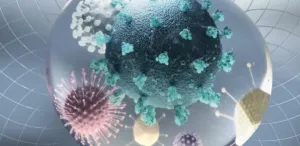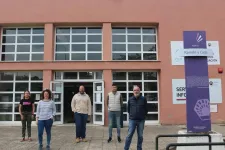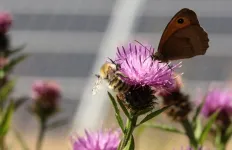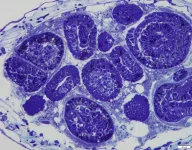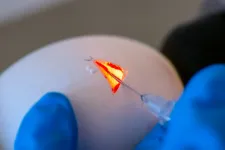2D nanomaterial MXene: The perfect lubricant
In extreme heat or in the vacuum of space: a novel nanomaterial delivers top performance in extreme situations, as demonstrated by TU Wien (Vienna) with international partners
2021-04-20
(Press-News.org) You can lubricate a bicycle chain with oil, but what do you do with a Mars rover or a red-hot conveyor belt in the steel industry? Very special nanomaterials have now been studied by the TU Wien together with research groups from Saarbrücken (Germany), Purdue University in the USA and the Universidad de Chile (Santiago, Chile).
The material class of MXenes (pronounced "maxene") has caused quite a stir in recent years in connection with novel battery technologies. But it now turns out that they are also an excellent solid lubricant that is extremely durable and performs its task even under the most difficult conditions. These remarkable properties of MXenes have now been published in the renowned journal ACS Nano.
Like a stack of sheets of paper
Just like the carbon material graphene, MXenes belong to the class of so-called 2D materials: their properties are essentially determined by the fact that they are ultra-thin layers, single atomic layers, without strong bonds to the layer above or below.
"You first start with so-called MAX phases, which are special layer systems consisting of titanium, aluminium and carbon, for example," says Prof. Carsten Gachot, head of the Tribology Group at the Institute of Engineering Design and Product Development at TU Wien. "The crucial trick is to etch out the aluminium with hydrofluoric acid."
What then remains is a stack of atomically thin layers of titanium and carbon that lie loosely on top of each other, much like sheets of paper. Each layer is relatively stable on its own, but the layers can easily be shifted against each other.
This displaceability of the atomic layers among each other makes the material an excellent dry lubricant: without generating abrasion, extremely low-resistance sliding is made possible. The friction between steel surfaces could thus be reduced to one sixth - and with exceptionally high wear resistance: even after 100,000 movement cycles, the MXene lubricating layer still functions without problems.
This is perfect for use under difficult conditions: While lubricating oil would evaporate immediately in a vacuum during space missions, for example, MXene in the form of fine powder can also be used there.
Independent of atmosphere and temperature
"Similar things have been tried with other thin-film materials, such as graphene or molybdenum disulphide," says Carsten Gachot. "But they react sensitively to moisture in the atmosphere. Water molecules can change the bonding forces between the individual layers. With MXenes, on the other hand, this plays a lesser role."
Another decisive advantage is the heat resistance of MXenes: "Many lubricants oxidise at high heat and lose their lubricity. MXenes, on the other hand, are much more stable, and can even be used in the steel industry, where mechanically moving parts can sometimes reach a temperature of several hundred degrees Celsius," explains Gachot.
The powdery lubricant was investigated in several experiments at TU Wien by Dr. Philipp Grützmacher from Prof. Gachot's research group as well as at Saarland University in Saarbrücken and Purdue University in the USA. At the other end of the world, Prof. Andreas Rosenkranz in Chile played a major role in initiating and designing the work.
"There is also already great interest in these materials on the part of industry. We assume that such MXenes can soon be produced on a larger scale," says Carsten Gachot.
INFORMATION:
Contact
Prof. Carsten Gachot
Institute of Engineering Design and Product Development
TU Wien
+43 1 58801 30763
carsten.gachot@tuwien.ac.at
[Attachments] See images for this press release:
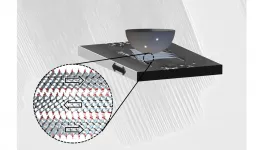
ELSE PRESS RELEASES FROM THIS DATE:
2021-04-20
A new type of COVID-19 testing strategy could help streamline the process of identifying cases, tracking variants and detecting co-infecting viruses.
At present, separate assays and complex workflows are involved in each of these three diagnostic procedures, with analyses typically performed in highly specialized facilities. KAUST researchers have now combined all three kinds of tests into a single procedure that should allow for point-of-care tracking of COVID-19 and the many emerging variants of SARS-CoV-2.
"Our all-in-one test provides a promising integrated solution for rapid field-deployable detection and mutational surveillance of pandemic viruses," says stem cell biologist Mo Li, who led the study.
The test involves a portable ...
2021-04-20
Scrobiculariaplana is a type of wedge clam widely found along the coasts and estuariesof northern Europe, the Mediterranean and West Africa. Like other mollusks, it is used as a bioindicator to study pollution in these types of ecosystems, for its ability to accumulate heavy metals and organic pollutants.
A new study has managed to identify the transcriptome and the associated proteome of this bivalve, a finding that could represent an important leap forward in the early detection of pollutants in coastal areas. While the genome is the DNA content comprising the genetic information essential for life, the transcriptome includes only the information on genes that are expressed, while the proteome is the totality of proteins expressed at a given time and under specific conditions. Therefore, ...
2021-04-20
Frequent use of social media may not amount to the same as addiction, according to research at the University of Strathclyde.
The study invited 100 participants to locate specific social media apps on a simulated smartphone screen as quickly and accurately as possible, while ignoring other apps. The participants were varied in the extent and type of their social media use and engagement.
The exercise aimed to assess whether social media users who reported the greatest level of use were more likely to have their attention drawn to the apps through a process known as 'attentional bias,' ...
2021-04-20
Researchers assessing the impact of solar energy development across Europe have come up with ten ways in which the expansion of solar can be shaped to ensure pollinators benefit.
Space-hungry solar photovoltaic (PV) is set to dominate future global electricity supply, but with careful decision making, efforts to secure clean energy need not come at the expense of biodiversity - particularly pollinators which are in sharp decline.
Bees, hoverflies, wasps, beetles, butterflies and moths play a key role in food production, with around 75% of the leading global food crops and 35% of global crop production relying on them to some extent.
Writing in the journal Renewable and Sustainable Energy Reviews, a Lancaster-led team of environmental scientists systematically reviewed the available ...
2021-04-20
KINGSTON, R.I., -- April 20, 2021 -- The Northwest Atlantic Shelf is one of the fastest-changing regions in the global ocean, and is currently experiencing marine heat waves, altered fisheries and a surge in sea level rise along the North American east coast. A END ...
2021-04-20
Almost 80% of South Africans speak one of the SEB family languages as their first language. Their origins can be traced to farmers of West-Central Africa whose descendants over the past two millennia spread south of the equator and finally into Southern Africa.
Since then, varying degrees of sedentism [the practice of living in one place for a long time], population movements and interaction with Khoe and San communities, as well as people speaking other SEB languages, ultimately generated what are today distinct Southern African languages such as isiZulu, isiXhosa and Sesotho.
Despite these linguistic differences, ...
2021-04-20
The Cyclostomata is an ancient group of aquatic colonial suspension-feeders from the phylum Bryozoa. The fact that they have unique placentae has been discovered by researchers at St Petersburg University and the University of Vienna. The coenocytes, i.e. large multinucleate cell structures, originate via nuclear multiplication and cytoplasmic growth among the cells surrounding the early embryo. Interestingly, the coenocytes are commonly found among fungi and plants, yet are quite rare in animals. It is the first time coenocytes have been discovered in placenta.
Biologists are well aware that the cells of the living organisms are incredibly different in the way that they behave. They may happen to form a ...
2021-04-20
Targeted therapy in early stages of breast cancer can pave the way for a notable higher success rate, shows a study from the University of Bergen, Norway (UiB).
PARP (Poly (ADP-ribose) polymerase) inhibitors represent an established targeted therapy for multiple cancer types, including cancers of the prostate, ovary and rare cases of breast cancer.
PARP inhibitors take advantage of defects in a central mechanism of DNA damage repair, observed in these cancers. While such compounds have been successfully applied in ovarian and prostate cancers, to this end only a small minority of patients with breast ...
2021-04-20
Researchers at the TUM have demonstrated a way to efficiently study molecular mechanisms of disease resistance or biomedical issues in farm animals. Researchers are now able to introduce specific gene mutations into a desired organ or even correct existing genes without creating new animal models for each target gene. This reduces the number of animals required for research..
CRISPR/Cas9 enables desired gene manipulations
CRISPR/Cas9 is a tool to rewrite DNA information. Genes can be inactivated or specifically modified using this method. The CRISPR/Cas9 system consists of two components.
The gRNA (guide RNA) is a short sequence that binds specifically to the ...
2021-04-20
Although the problem of gender discrimination is already found in the music industry, music recommendation algorithms would be increasing the gender gap. Andrés Ferraro and Xavier Serra, researchers of the Music Technology research group (MTG) of the UPF Department of Information and Communication Technologies (DTIC), with Christine Bauer, of the University of Utrecht (Netherlands), have recently published a paper on gender balance in music recommendation systems in which they ask themselves how the system should work to avoid gender bias.
At the outset, the authors identified that gender justice was one of the artists' main concerns
Initially, the work by Ferraro, Serra and Bauer ...
LAST 30 PRESS RELEASES:
[Press-News.org] 2D nanomaterial MXene: The perfect lubricant
In extreme heat or in the vacuum of space: a novel nanomaterial delivers top performance in extreme situations, as demonstrated by TU Wien (Vienna) with international partners

